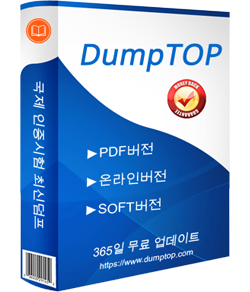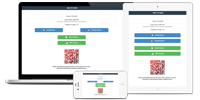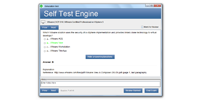진정한 시뮬레이션 환경
많은 응시자 분들이 처음 자격증 시험에 도전하는 것이라 시험보실 때 경험 부족으로 인해 시험시간에 너무 긴장하여 평소 실력을 발휘하지 못하는 경우가 있습니다.이를 피면할수 있도록 미리 TOGAF Enterprise Architecture Combined Part 1 and Part 2 Exam 시험과 비슷한 환경에서 연습하는 훈련을 통해 실제 시험에서 긴장을 완화시키는 것이 좋습니다. 저희는OGEA-103 실제 시험 시뮬레이션 테스트 환경에 해당하는 제품을 가지고 있습니다. 제품 구매후 자신의 계정에 로그인하시고 실제 시험 환경을 체험해 보시면 시험 환경에 적응되어 OGEA-103 시험보실때 문제 푸는 방법을 모색하는 시간이 줄어들어 자신감이 생겨 한방에 시험패스 가능할것입니다.
커리큘럼 소개
대부분의 분들에게 있어서 자격증 시험이 처음일 수 있으므로 자격증 시험과 관련된 많은 정보는 복잡하고 난해할수 있습니다. 하지만 자격증 취득 초보자들의 덤프공부 후기에 따르면 OGEA-103 덤프는 시험의 모든 출제범위와 시험유형을 커버하고 있어 덤프에 있는 문제와 답만 기억하시면 TOGAF Enterprise Architecture Combined Part 1 and Part 2 Exam 시험을 쉽게 패스하여 자격증을 취득할수 있다고 합니다. OGEA-103 시험대비 덤프는 초보자의 눈높이에 맞추어 덤프를 사용하시는 분께서 보다 편하게 공부할수 있도록 엘리트한 전문가들의 끊임없는 연구와 자신만의 노하우로 최선을 다한 자료입니다.덤프의 도움으로 여러분은 업계에서 또 한층 업그레이드 될것입니다.
간결한 내용
OGEA-103 덤프문제는 다년간의 다양한 시험에 대한 분석을 바탕으로, 시험문제의 주요 발전 경향에 따라 응시자가 직면할 어려움을 정면 돌파하기 위하여 전문가들이 자신만의 경험과 끊임없는 노력으로 제작한 최고품질의 시험자료입니다.다른 교육 플랫폼과 달리 TOGAF Enterprise Architecture Combined Part 1 and Part 2 Exam 시험덤프는 오래된 문제는 삭제하고 새로운 문제는 바로바로 추가하여 덤프가 항상 가장 최신버전이도록 간결하고 눈에 잘 띄는 텍스트로 요약되어 있기에 덤프만 완벽하게 마스터 하시면 OGEA-103 시험패스는 더는 어려운 일이 아닙니다.
우리의 TOGAF Enterprise Architecture Combined Part 1 and Part 2 Exam 시험 덤프 문제는 최고품질의 시험대비 자료입니다. 전문가들이 최신 실러버스에 따라 몇년간의 노하우와 경험을 충분히 활용하여 연구제작해낸 자료라 해당 시험의 핵심문제를 모두 반영하고 있습니다.OGEA-103 덤프로 시험을 준비하시면 시험패스는 더는 어려운 일이 아닙니다. OGEA-103 시험에서 출제 가능성이 높은 문제만 정리한 최신 버전 자료라 가장 적은 문항수로 모든 응시자가 효율적인 시험공부를 할 수 있도록 하고 부담 없이 한번에 OGEA-103 시험을 즉시 통과할 수 있도록 도와드립니다.
최신 Enterprise Architecture OGEA-103 무료샘플문제:
1. Scenario:
You are working as an Enterprise Architect at a large company. The company runs a chain of home improvement stores, as well as a website for selling products. The website lets many brands work with the company.
The stores open seven days a week and use a standard method to track sales and inventory. This involves sending accurate and timely sales data to a central inventory management system that can predict demand, adjust stock levels, and automate reordering. The website is supported by regional fulfillment centers and also uses the central inventory management system. The central inventory management system is housed at the company's central data center.
The company has agreed to merge with a major competitor. The leadership teams of both organizations have said they are committed to a smooth transition for customers. All stores will keep their own brand names.
They will combine the systems of the organizations, which includes merging retail operations and systems.
Duplicated systems will be replaced with one standard retail management system. Additionally, they will reduce the number of applications being used. The CIO expects that these changes will lead to substantial cost savings for the newly merged company.
An enterprise plan for both organizations has been created. The aim is to set priorities for the transition, especially in terms of information management and application development. It is crucial to make decisions that will create long-term value.
The company has a mature Enterprise Architecture (EA) practice and uses the TOGAF standard for its architecture development method. The EA program is sponsored by the Chief Information Officer (CIO).
The Request for Architecture Work to oversee the transition has been approved. The project has been scoped, and you have been assigned to work on it.
You have been asked to confirm the most relevant architecture principles for the transition.
Based on the TOGAF Standard, which of the following is the best answer?
A) Service Orientation, Compliance with the Law, Requirements Based Change, Responsive Change Management, Data Security
B) Control Technical Diversity, Interoperability, Data is an Asset, Data is Shared, Business Continuity
C) Common Use Applications, Data is an Asset, Common Vocabulary and Data Definitions, Maximize Benefit to the Enterprise, Business Continuity
D) Ease of Use, Common Use Applications, Data is an Asset, Technology Independence, Business Continuity
2. Consider the following ADM phases objectives.
Objective:
1.Develop the Target Data Architecture that enables the Business Architecture and the Architecture Vision
2.Develop the Target Business Architecture that describes how the enterprise needs to operate to achieve the business goals
3.Develop a high-level aspirational vision of the capabilities and business value to be delivered as a result of the proposed Enterprise Architecture
4.Identify candidate Architecture Roadmap components based upon gaps between the Baseline and Target Technology Architectures Which phase does each objective match?
A) 1C-2D-3B-4A
B) 1B-2D-3A-4C
C) 1C-2B-3A-4D
D) 1A-2B-3C-4D
3. Consider the following descriptions of deliverables consumed and produced across the TOGAF ADM cycle.
General rules and guidelines, intended to be enduring and seldom amended, that inform and support the way in which an organization sets about fulfilling its mission
The joint agreements between development partners and sponsors on the deliverables, quality, and fitness-for-purpose of an architecture.
A document that is sent from the sponsoring organization to the architecture organization to trigger the start of an architecture development cycle
A set of quantitative statements that outline what an implementation project must do in order to comply with the architecture.
Which deliverables match these descriptions?
A) 1 Architecture Requirements Specification -2 Architecture Principles - 3 Architecture Vision - 4 Architecture Contracts
B) 1 Architecture Contracts - 2 Architecture Requirements Specification - 3 Architecture Vision - 4 Architecture Principles
C) 1 Architecture Principles -2 Architecture Contracts - 3 Architecture Requirements Specification-4 Request for Architecture Work
D) 1 Architecture Principles -2 Architecture Contracts - 3 Request for Architecture Work - 4 Architecture Requirements Specification
4. Complete the sentence The purpose of Enterprise Architecture is to_______________.
A) govern the stakeholders
B) take major improvement decisions
C) guide effective change
D) control the bigger changes
5. Which phase of the ADM has the purpose to develop an Enterprise Architecture Capability?
A) Phase A
B) Phase G
C) Phase B
D) Preliminary Phase
질문과 대답:
| 질문 # 1 정답: C | 질문 # 2 정답: C | 질문 # 3 정답: C | 질문 # 4 정답: C | 질문 # 5 정답: D |


 343 고객 리뷰
343 고객 리뷰





